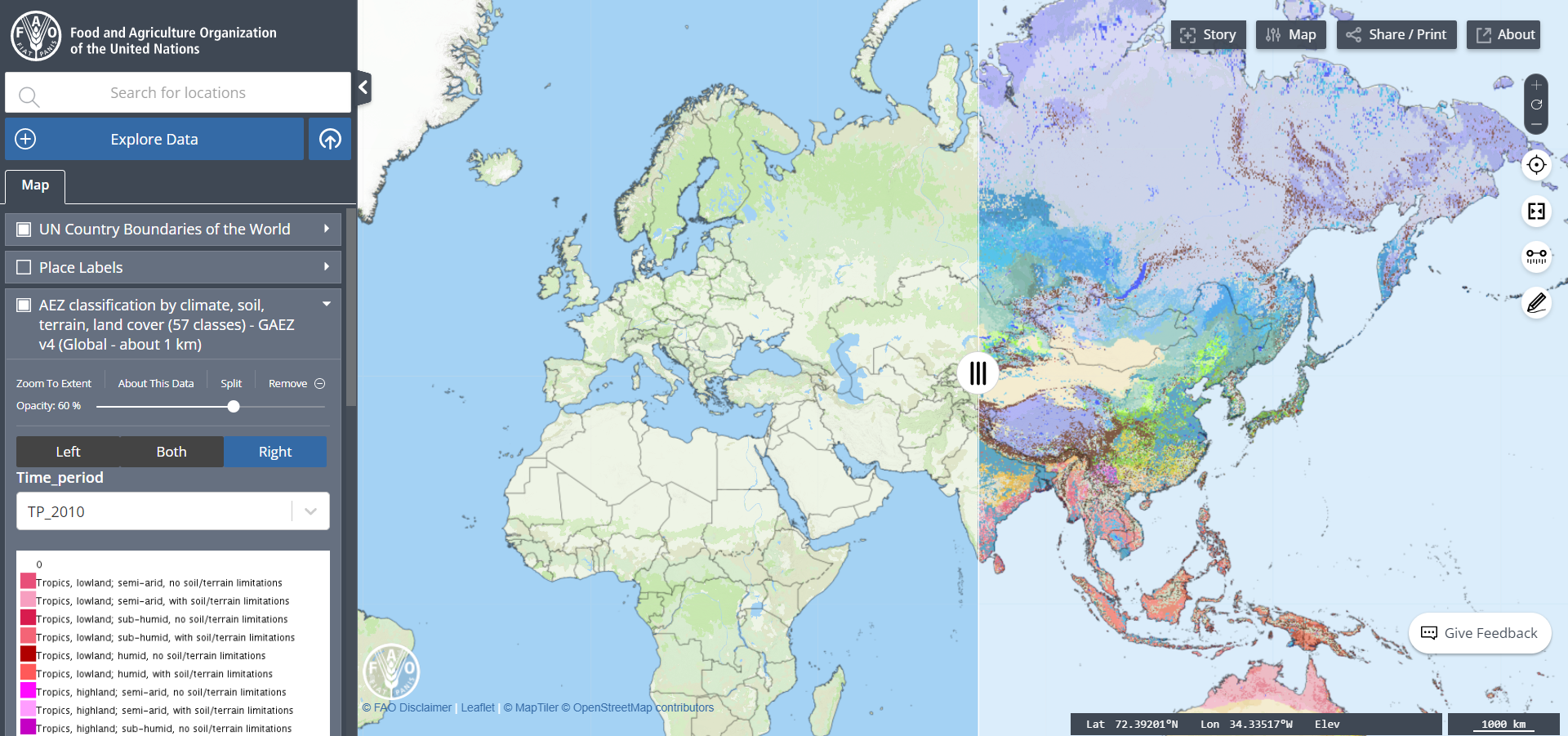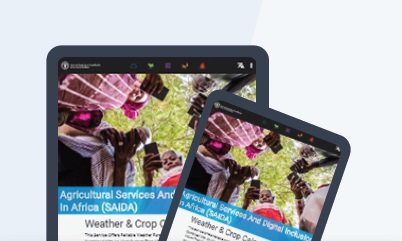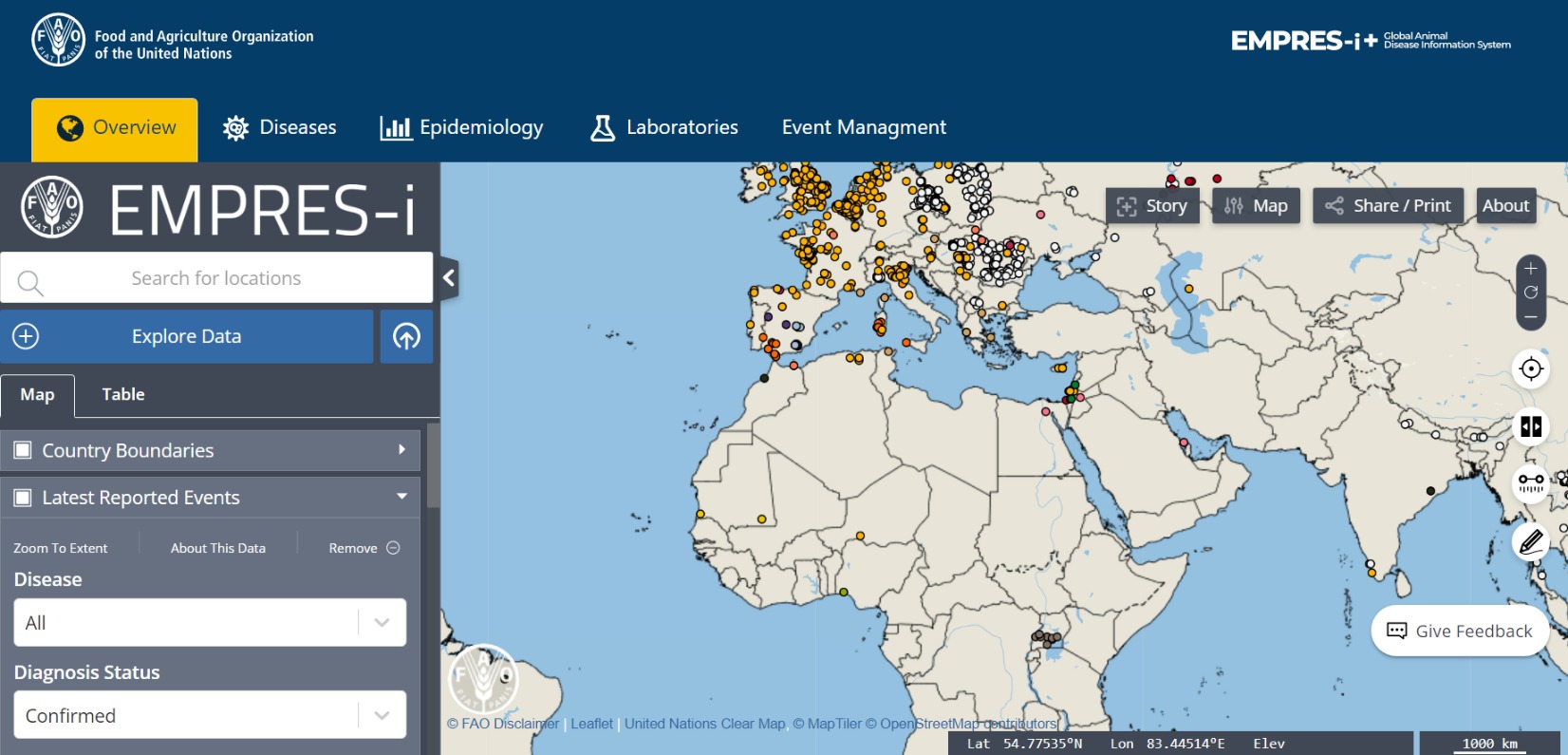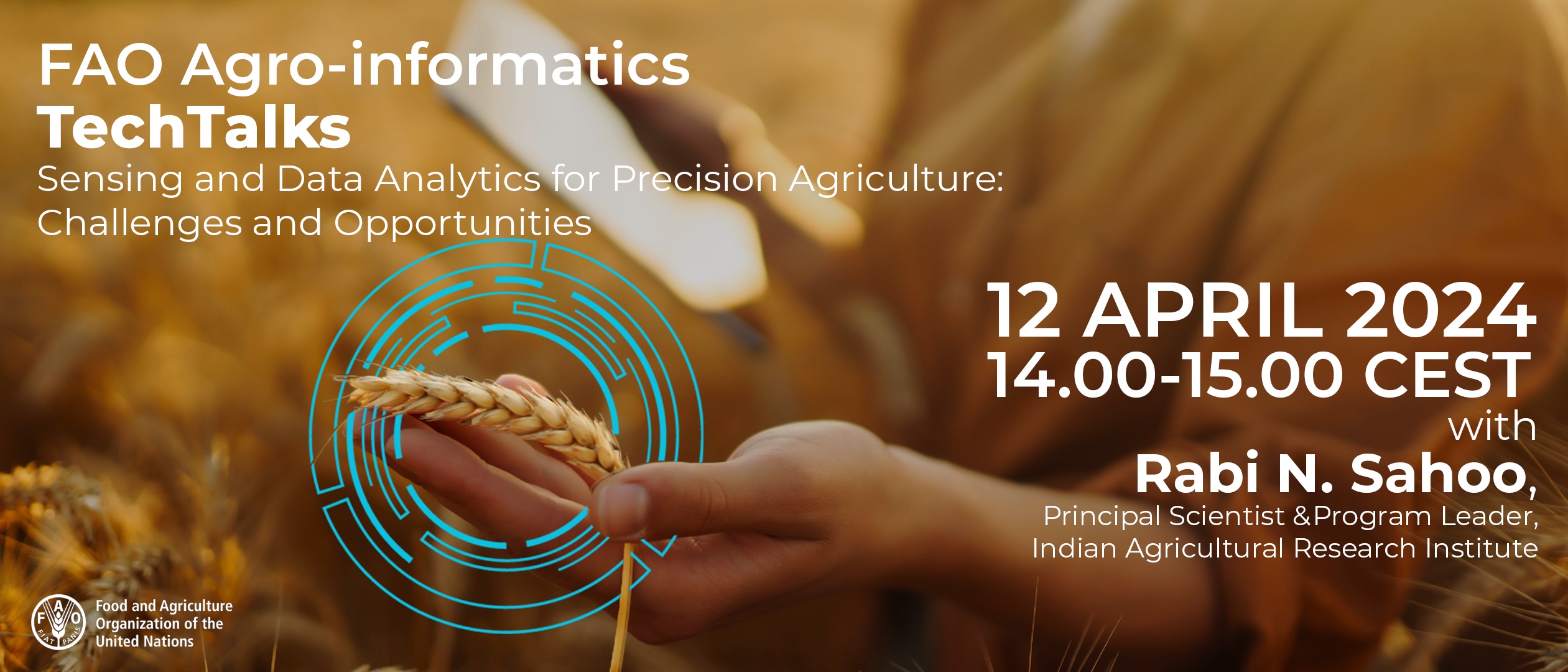Agro-informatics connects information technology with the management, analysis and application of agricultural data to design more accurate and targeted agricultural interventions. The use of new technologies and techniques in agriculture, such as satellite imagery, remote sensing, and geographic information systems, enable the transformation of data into actionable information.
Geospatial technologies and agricultural data represent an opportunity to find new ways of reducing hunger and poverty through more accessible and integrated data-driven solutions. Applying sophisticated data and technology to FAO’s programmes can help us to identify challenges and opportunities to ensure that the planet can continue to sustain us, now and in the future.
The development, continuous improvement, and scaling up of ICTs and Agro-informatics Digital Public Goods are an integral part of FAO’s work and one of the Organization’s core IT services. They are essential to FAO’s work in delivering the tools for more evidence-based decision-making, accurate natural resource management, improved production and strengthen early warning systems.
Our work
FAO Agro-informatics provides the digital enabling tools for FAO’s strategic technical initiatives from Hand-in-Hand to OneHealth. One of the key pillars is working with technical teams throughout the Organization to ensure the good functioning, continuous improvement and interoperability of FAO digital tools.
FAO Agro-informatics Platform
The Agro-informatics Platform, led by the Digital FAO and Agro-informatics Division's Agro-informatics team, is a digital public good that helps analyze and compare data on food and agriculture to reduce poverty, hunger and increase economic development.
Building on the first and still growing success of the flagship FAO Hand-in-Hand Geospatial platform, the technical arm of FAO Hand-in-Hand Initiative, FAO's expanded Agro-informatics Platform (AP) aims to showcase through more digital capabilities and developments all the new possibilities that are opening now to enable more targeted interventions on the ground. Besides data and geospatial, more elements have now been incorporated, with more content in terms of knowledge, information as well as new techniques, including Artificial Intelligence (AI) and Machine Learning (ML).
To access the Agro-informatics Platform, click here
For the training material -guides and tutorials- consult our Resources and Training section.

Hand-in-Hand Geospatial Platform
FAO's open-access Hand in Hand (HIH) Geospatial Platform provides advanced information, including food security indicators and agricultural statistics, for more targeted agriculture interventions. The platform unlocks millions of data layers from different domains and sources to serve as the key enabling tool for FAO's HiH Initiative.

In Focus
FAO Digital Services Portfolio (DSP)
FAO Digital Services Portfolio (DSP) is a cloud based platform designed to disseminate information in the food and agriculture and related sectors and scale up agricultural services for smallholders and family farmers, fostering digital inclusion.

FAO Global Animal Disease Information System (EMPRES-i)
EMPRES Global Animal Disease Information System (EMPRES-i) supports veterinary services by facilitating the organization and access to regional and global disease information. Timely and reliable disease information enhances early warning and response to transboundary and high impact animal diseases, including emergent zoonoses, and supports prevention, improved management and progressive approach to control.
.png?sfvrsn=774d8437_11)
Climate Risk ToolBox
The Climate Risk ToolBox (CRTB) allows users to conduct climate risk screenings in a few steps, and to obtain a comprehensive report that includes climate-resilient measures and tailored recommendations to prevent and reduce climate risk. The CRTB includes a repository of up-to-date climatic, geographical, social, and economic geospatial information which helps identify the climate-related risk in any area of interest worldwide.
Events

Virtual Event
Agro-informatics TechTalk ‘Sensing and Data Analytics for Precision Agriculture: Challenges and Opportunities’ on Friday 12 April at 14:00 – 15:00 CEST
12/04/2024
On Friday 12 April at 14:00 CEST, Dr. Rabi N. Sahoo, Principal Scientist at the Indian Agricultural Research Institute (IARI) with over 24 years of...

Virtual Event
Educating with Immersive Technology in Food and Agriculture – an International Training Centre of the ILO & FAO Webinar
08/02/2024
This webinar aims to explore the potential of immersive technology, encompassing Virtual Reality (VR), Augmented Reality (AR), and Mixed Reality (MR),...
Latest Video
How to Work with Data – Tables and Charts – on FAO Agro-informatics Platform
26/01/2024
In this video, we will learn how to work with the data from datasets on FAO Agro-informatics Platform by going through features available on the platform such as tables and charts.
How to Create and Share a Story on FAO Agro-informatics Platform
27/12/2023
In this video, we will learn how to create and share a story on the Agro-informatics Platform. The story feature allows us to tell a compelling story using the vast datasets of maps, charts, and tables that are available on the Agro-informatics platform.
Latest Audio
FAO Brief: Insights from the 2023 World Food Forum Week
20/10/2023
The 2023 Science and Innovation Forum has come to an end, leaving the world with a renewed sense of hope and purpose. The discussions, collaborations, an...
FAO and Google partnership: Strengthening the role of technology for sustainable development
01/01/2017
Digital technology tapping into satellite imagery is revolutionizing the way countries can assess, monitor and manage their natural resources -- including tracking deforestation and desertification. FAO and Google are working together to make high-resolution satellite data an everyday tool in managing the world’s natural resources in a joint effort for sustainable development.
Latest Publication

Climate Risk Tool Box- Quick User's guide
01/10/2022
The Climate Risk Toolbox (CRTB) was developed to support climate-resilient project design. The tool is an open-access resource, hosted on the Hand-in-Hand Geospatial platform, allowing users to obtain a climate riskscreening in a few steps.
